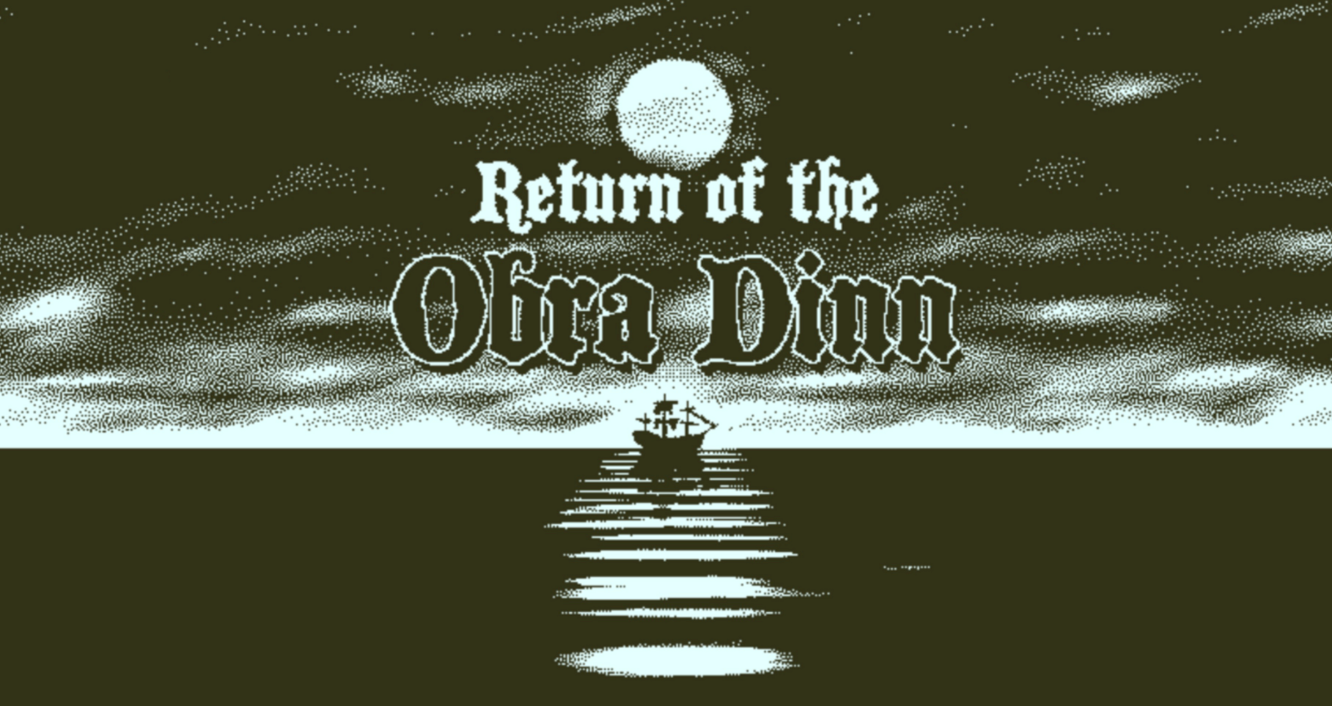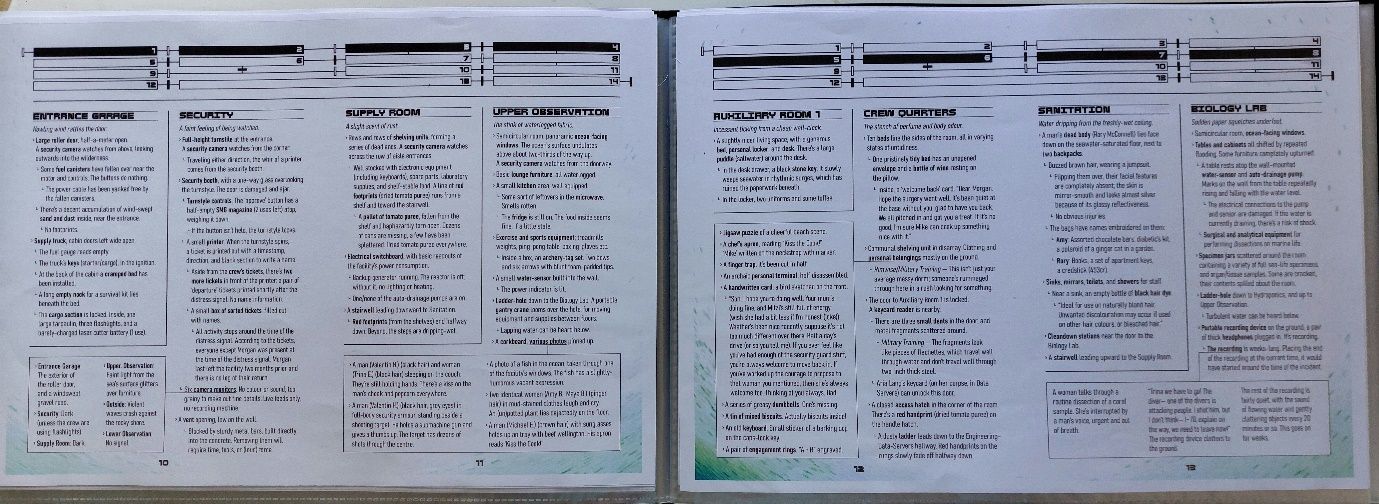I Ran: Brackish (Using Mothership)

Watery graves, inspiration from an iconic indie videogame *and* an accurate representation of water pumps? Read on to find out what I thought of this investigative Mothership module.
What is this thing?
Brackish is a third party module for Mothership, written, edited, illustrated and laid out by Norgad with co-writing and editing credit to C. Bell. The PCs are given a job by Di-Nobra Investigative Services to determine the status and location of every member of a coastal observation laboratory… which sent out an automatic distress signal three weeks ago and has since been silent.
There are some very specific requirements for obtaining the relevant information to your employer’s satisfaction, which I’ll get to later. Needless to say, heavy spoilers from this point onwards.
I backed Brackish on Backerkit (try saying that out loud) as a pdf after a positive experience running Norgad’s previous mothership module Dead Weight, which I had discovered via Idle Cartulary’s Bathtub Review (Nova has also covered Brackish here). Dead Weight is a great one-shot and played well at my table, leaning heavily on just how hazardous outer space is in a way that surprisingly few Mothership modules do. Consequently, I was excited to run Brackish for two sessions of 3-4 hours each (including some character generation in both sessions, because we had 3 players for session 1 and 4 for session 2). This was a campaign opener, so aside from some slight changes to the equipment loadout generation, it wasn’t really impacted by any of the house rules I wrote about last month - although we were playing with a voidborn and a biologic.
The Setup
Brackish makes it clear that you are here to investigate and obtain a complete set of information — there’s no single murderer or creature to identify, no root cause to determine, you must instead find out what happened to every single member of the 11-strong crew of Lab 46B. Failure to ID even one of them imposes a 25% pay cut, and in practice the deductive puzzle-solving meant my players jumped from 6/11 to 10/11 pretty rapidly. This did then spark a conversation about whether it was better to cut and run, so I was pleased to see a bonus included in the job description to keep the crew interested.
The module further underlines this premise by giving you… a digital camera. Specifically tamper-proof and waterproof, with a long focus/exposure time of 10 seconds (aka one combat round) this deliberately awkward artifact is a perfect piece of retro Mothership clunky tech. There’s also a printable handout for the players to fill in, representing them tagging the photos they are contractually obligated to take of the evidence to support their claims.

I think this succeeds on theme and engagement more than it does emergent gameplay — although I appreciate that if the camera holder dies there’s potentially some interesting manoeuvres to recover what is essentially your paycheck. But that’s not really a criticism, because that flavour and physicality? It keeps your players focused. A literal list of evidence to fill in (alongside some basic map and crew info to aid deductions from the start) really helps the players avoid distractions and feel like they’re making progress.
Now, you may be thinking you’ve seen the concept of applying logic and observation to deduce the fate of a list of people in a watery environment before…
The Inspiration and the Mystery

I won’t be spoiling Return of the Obra Dinn (go play it if you haven’t already) other than to reassure readers that while the premise is the same, Brackish isn’t copying it. If you’ve played it, you will still very much enjoy Brackish — you’ll simply have sharpened your deductive skills to use at the table. One notable difference is youu don’t get any “special tools” to help you, and all the information is (mostly) apparent with some basic interaction — but there’s some good use of ‘bonus knowledge’ tagged to individual skills to make it easier for Wardens to rule on.
In play, this creates a need for the crew to visit almost every room in the complex (14 in total). I think you could do it with only 11, but surely every crew is going to want to explore (loot) closed storage rooms? The clues are a good mixture of obvious and obscure — and all the while dead bodies drive saves/stress and information about the threat (see below) while others imply relationships and locations that will need to be reinforced with further investigation. Moreover, they all make this place feel real and lived in — the diverse flotsam (narrator: hey that’s the name of the monster) of isolated peoples’ lives.
This is still NSR gameplay, so the more long-winded clues (a letter from an NPC to their parents for example) can be handwaved a little by Warden who wants to keep the pace moving. That means it all hangs together, justifying the complexity and two session length without overwhelming the players (a risk if the location or mystery were any larger).
One criticism I have is that the sole survivor (who my players were monstrously unsympathetic to) could do with some more guidelines. We’re told Cedric “is glad to offer any information he can” — but the Warden has to perform their own deduction to infer what he knows. Similarly, my players got somewhat distracted by the fact that one of the NPCs was receiving offsite medical treatment when all of this went down — surely, they reasoned, their employer would know about that? Or they would have emerged in the last 3 weeks in-game? Thus, I had to invent it being unapproved time spent in a medpod following an injury that could imperil various other peoples’ bonuses.
Environment and Layout

The layout is neat, with each floor of the lab given its own two page spread based on the room order in the map. As seen in the photo above, it worked especially well with my own preferred way of running home printed modules.
Paired with some solid writing on the room descriptions (especially the brief ‘first impressions’ italics), this is easy to communicate to your players. A little more information on the properties of the various barriers would have been useful — doors are presumably watertight (but does the backup power affect their ability to open/close?), each ladder presumably has a hatch (but only some of the rooms mention them) and the security turnstile should emphasise that it blocks entry rather than simply being described as full-height. The module start is also somewhat linear with only one entrance and then three rooms in a row, but I’m much more willing to forgive that in a horror game than a more traditional dungeoncrawler.
There’s some nice environmental interaction here too, with security monitors near the start giving clues about future rooms, and a flooding/emptying cycle with a pump and sensor that made this former boiler feed water system designer very happy. What really elevates them is the thematic link with the supernatural elements at play. The pumping mimics the heart-like pulse of seawater from the mysterious heart in the chest, while the cameras and screens evoke the mirrors and reflections by which Flotsam traverses the facility.
I found the effect of the flooding is more to confuse and disorient the players rather than put characters in serious danger, however it does have an entertaining interaction with the only monster in play here…
The Threat
Flotsam is built gameplay first. And that’s a good thing. This transformed diver (complete with tattered wetsuit and a visor that turns out to be polished skin, leading my players to use the unfortunate term ‘flesh helmet’ to describe its head) is designed for stalking and pressure while the crew complete their investigation. As such, Wardens are given plenty to work with, to the point that you can derive a checklist of good Mothership creature design:
A melee attack that does something damaging AND horrific
A weaker ranged attack that wears you down and has a good chance to shred armour
Armour that improves as it takes damage
A list of tactics and behaviour (based partly on response to damage)
A movement mechanism (it can watch from reflective surfaces, and enter/exit them if they’re a larger surface area than itself)
This last one could do with a bit more detail, perhaps a list of common reflective surfaces and whether they are/aren’t suitable for movement. The hints that the doors of data servers are “mirror-like” are useful, but a simple clarification on whether water must be undisturbed to move through might be handy. Likewise, some ‘creepy places to watch from’ (I was quite proud of coming up with the screen of the camera itself).
There’s also a heart in a box that Flotsam, and potentially anyone that sees the heart, has to protect, with a key elsewhere. I would suggest having Flotsam actively want to recover the key and open the box to look upon the heart, as this made for a good climax in play; both exposing the players to the heart’s effect and giving them a chance of damaging it with the box open.
All of this doesn’t have a huge amount of connection or straightforward theming — and the players have no real means to deduce what Flotsam can do or wants except for its two types of attack. But as written, it really does work in play, and the unknown/inexplicable… well it is a horror game after all. Not everything needs to have a logical explanation. And you need the fear and pressure for what could otherwise be a slow, methodical investigation.
Conclusions
You’ll note I’ve spoken about layout and not art, and that’s because aside from a single image of Flotsam this module is essentially art free. A couple of images, maybe covering one of the first two rooms and then one of the ‘bloodbaths’ later on with transformed bodies could have provided something to show the players. Ultimately, it’s a credit to the writing and design that they’re a nice to have, rather than a necessity.
This is the best investigation-based Mothership module I’ve read or run, and one of the best two-shots overall. The authors know what they’re doing, and I’m keen to see any forthcoming Mothership month projects. If you have a table who can do two sessions with not too much of a time gap between them, and they want something a little more cerebral, you’ll have a great time with this.